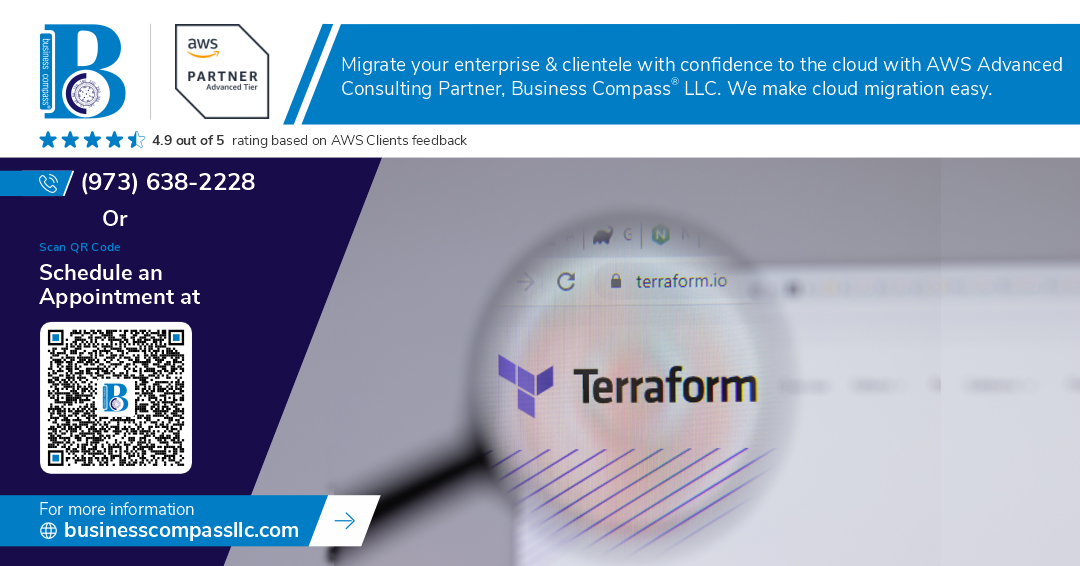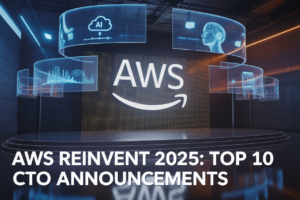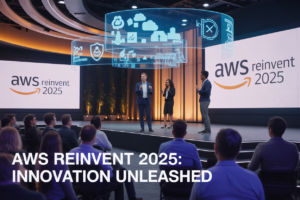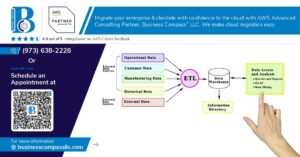Setting up AWS infrastructure manually through the console is time-consuming and error-prone. DevOps engineers, cloud architects, and infrastructure teams need a reliable way to build and manage AWS VPC environments at scale.
This comprehensive Terraform AWS VPC guide is designed for professionals who want to move beyond basic tutorials and implement production-ready Infrastructure as Code practices. You’ll learn to automate complex AWS networking setups using proven Terraform patterns that work in real enterprise environments.
We’ll start with planning your AWS VPC architecture and understanding the essential Terraform fundamentals needed for AWS infrastructure automation. Then you’ll discover how to build VPC core components systematically, from subnets and route tables to NAT gateways and security groups.
You’ll also explore advanced VPC features like VPC endpoints, transit gateways, and cross-region networking integrations. Finally, we’ll cover code organization best practices and testing strategies that ensure your Terraform infrastructure deployment remains maintainable and reliable as your AWS environment grows.
By the end, you’ll have a complete AWS VPC automation framework you can adapt for any project size or complexity.
Essential Terraform Fundamentals for AWS Infrastructure
Core Terraform concepts and workflow benefits
Terraform transforms AWS infrastructure automation by treating your cloud resources as code. The declarative approach lets you define your desired infrastructure state, while Terraform handles the complexity of creating, updating, and destroying resources in the correct order. This Infrastructure as Code methodology eliminates manual configuration drift, enables version control for your entire AWS architecture, and makes infrastructure changes reproducible across multiple environments.
The workflow follows a simple three-step process: write configuration files, plan changes to preview what Terraform will do, then apply those changes to your AWS account. This predictable cycle reduces deployment errors and gives teams confidence when modifying production infrastructure. Terraform’s dependency graph automatically determines resource creation order, so your VPC gets built before subnets, and security groups are created before EC2 instances that reference them.
AWS provider configuration and authentication methods
Configuring the AWS provider properly sets the foundation for secure Terraform AWS infrastructure management. The provider block specifies which AWS region your resources will be created in and how Terraform authenticates with AWS services. You can authenticate using several methods: IAM user access keys, IAM roles, or AWS CLI profiles.
terraform {
required_providers {
aws = {
source = "hashicorp/aws"
version = "~> 5.0"
}
}
}
provider "aws" {
region = "us-west-2"
profile = "terraform"
}
For production environments, avoid hardcoding credentials in your Terraform files. Instead, use environment variables, AWS profiles, or IAM roles attached to your EC2 instances or CI/CD systems. This approach keeps sensitive authentication data out of version control while maintaining secure access to AWS services during Terraform infrastructure deployment.
State management best practices for team environments
Terraform state files track the real-world status of your AWS VPC and other infrastructure components. When working in teams, storing state locally creates conflicts and inconsistencies. Remote state backends solve this problem by centralizing state storage and enabling state locking to prevent simultaneous modifications.
Amazon S3 with DynamoDB locking provides a robust remote state solution for AWS infrastructure automation:
terraform {
backend "s3" {
bucket = "my-terraform-state-bucket"
key = "vpc/terraform.tfstate"
region = "us-west-2"
dynamodb_table = "terraform-state-locks"
encrypt = true
}
}
Enable versioning on your S3 bucket to maintain state file history and recover from accidental deletions. The DynamoDB table prevents multiple team members from running Terraform simultaneously, which could corrupt your state file. Always run terraform init after cloning a repository to download the remote state and configure your local Terraform workspace.
Resource dependencies and lifecycle management
Terraform automatically handles resource dependencies through implicit and explicit relationships. When you reference one resource’s attributes in another resource configuration, Terraform creates an implicit dependency. For example, referencing a VPC’s ID in a subnet automatically makes the subnet depend on the VPC being created first.
Explicit dependencies use the depends_on argument when Terraform can’t automatically detect relationships:
resource "aws_instance" "web_server" {
ami = "ami-12345678"
instance_type = "t3.micro"
subnet_id = aws_subnet.public.id
depends_on = [aws_internet_gateway.main]
}
Lifecycle management controls how Terraform handles resource updates and deletions. Use create_before_destroy to avoid downtime when replacing resources, or prevent_destroy to protect critical infrastructure from accidental deletion. The ignore_changes argument tells Terraform to ignore specific attribute changes, useful when external systems modify resources outside of Terraform control.
These lifecycle rules ensure your Terraform AWS VPC configurations remain stable and predictable across deployments while protecting against common operational mistakes.
Planning Your AWS VPC Architecture
Network topology design principles for scalability
When designing your Terraform AWS VPC architecture, think about how your network will grow over time. Start with a hub-and-spoke model where your main VPC acts as the central hub connecting to other VPCs or on-premises networks. This approach gives you better control over traffic flow and makes scaling much easier down the road. Plan for at least three availability zones from day one – even if you’re not using all of them initially. This multi-AZ strategy ensures high availability and provides room for expansion without major architectural changes. Consider implementing a layered approach with separate subnets for different tiers of your application, creating natural boundaries that improve both security and performance.
Subnet segmentation strategies for multi-tier applications
Smart subnet segmentation forms the backbone of a well-architected AWS VPC. Create distinct layers for your web tier, application tier, and database tier across multiple availability zones. Your public subnets should host only internet-facing resources like load balancers and NAT gateways, while private subnets handle your application servers and databases. This separation isn’t just about security – it also simplifies your Terraform configuration and makes troubleshooting much more straightforward. Use consistent naming conventions like “public-web-1a” or “private-app-2b” to make your infrastructure self-documenting. Each tier should have its own route tables and security groups, giving you granular control over network traffic flow between layers.
CIDR block allocation for future growth
Getting your CIDR block allocation right from the start saves you massive headaches later. Choose a large enough block that won’t box you in – /16 networks give you plenty of room to grow with 65,536 IP addresses. Break down your main CIDR into smaller /24 subnets, leaving gaps between allocations for future expansion. For example, if you start with 10.0.0.0/16, you might use 10.0.1.0/24 for public subnets and 10.0.10.0/24 for private subnets, leaving space in between. Document your IP allocation strategy in your Terraform code comments so your team knows which ranges are available. Remember that you can’t change VPC CIDR blocks easily after creation, so plan for at least 5x your current capacity needs.
Building VPC Core Components with Terraform
Creating the main VPC resource with proper tagging
Your VPC serves as the foundation for your entire AWS infrastructure, so getting the configuration right matters. Start with the aws_vpc resource and define clear CIDR blocks that accommodate future growth. Most teams choose /16 networks like 10.0.0.0/16 for flexibility. Enable DNS hostnames and resolution by setting both enable_dns_hostnames and enable_dns_support to true. Tag everything consistently from day one – include environment, project, and owner tags as minimum requirements.
resource "aws_vpc" "main" {
cidr_block = var.vpc_cidr
enable_dns_hostnames = true
enable_dns_support = true
tags = {
Name = "${var.project_name}-vpc"
Environment = var.environment
Project = var.project_name
ManagedBy = "terraform"
}
}
Configuring internet gateways and NAT gateways
Internet connectivity requires both internet gateways and NAT gateways working together. The internet gateway handles inbound and outbound traffic for public subnets, while NAT gateways enable private subnet resources to reach the internet securely. Deploy NAT gateways in each availability zone for high availability, though single NAT gateway setups work for development environments. Attach the internet gateway directly to your VPC, then place NAT gateways in public subnets with Elastic IP addresses.
resource "aws_internet_gateway" "main" {
vpc_id = aws_vpc.main.id
tags = {
Name = "${var.project_name}-igw"
}
}
resource "aws_nat_gateway" "main" {
count = length(var.public_subnet_cidrs)
allocation_id = aws_eip.nat[count.index].id
subnet_id = aws_subnet.public[count.index].id
depends_on = [aws_internet_gateway.main]
}
Setting up public and private subnets across availability zones
Distribute subnets across multiple availability zones for resilience and follow AWS best practices. Create public subnets for load balancers and bastion hosts, private subnets for application servers and databases. Size your subnets appropriately – /24 networks provide 256 addresses each, perfect for most workloads. Use data sources to fetch available zones dynamically rather than hardcoding them. Map public subnets to receive public IP addresses automatically.
data "aws_availability_zones" "available" {
state = "available"
}
resource "aws_subnet" "public" {
count = length(var.public_subnet_cidrs)
vpc_id = aws_vpc.main.id
cidr_block = var.public_subnet_cidrs[count.index]
availability_zone = data.aws_availability_zones.available.names[count.index]
map_public_ip_on_launch = true
tags = {
Name = "${var.project_name}-public-${count.index + 1}"
Type = "public"
}
}
resource "aws_subnet" "private" {
count = length(var.private_subnet_cidrs)
vpc_id = aws_vpc.main.id
cidr_block = var.private_subnet_cidrs[count.index]
availability_zone = data.aws_availability_zones.available.names[count.index]
tags = {
Name = "${var.project_name}-private-${count.index + 1}"
Type = "private"
}
}
Establishing route tables and associations
Route tables control traffic flow between subnets and external networks. Create dedicated route tables for public and private subnets rather than using the default table. Public route tables need routes to the internet gateway for 0.0.0.0/0 traffic. Private route tables route internet traffic through NAT gateways in their respective availability zones. Associate each subnet with its appropriate route table explicitly to avoid configuration drift.
resource "aws_route_table" "public" {
vpc_id = aws_vpc.main.id
route {
cidr_block = "0.0.0.0/0"
gateway_id = aws_internet_gateway.main.id
}
tags = {
Name = "${var.project_name}-public-rt"
}
}
resource "aws_route_table" "private" {
count = length(aws_nat_gateway.main)
vpc_id = aws_vpc.main.id
route {
cidr_block = "0.0.0.0/0"
nat_gateway_id = aws_nat_gateway.main[count.index].id
}
tags = {
Name = "${var.project_name}-private-rt-${count.index + 1}"
}
}
Implementing security groups with least privilege access
Security groups act as virtual firewalls controlling inbound and outbound traffic to your resources. Start with deny-all policies and add specific rules based on actual requirements. Create separate security groups for each application tier – web, application, and database layers. Reference other security groups in rules rather than hardcoding IP addresses for better maintainability. Document each rule with descriptions explaining its purpose.
resource "aws_security_group" "web_tier" {
name_prefix = "${var.project_name}-web-"
vpc_id = aws_vpc.main.id
ingress {
description = "HTTP from anywhere"
from_port = 80
to_port = 80
protocol = "tcp"
cidr_blocks = ["0.0.0.0/0"]
}
ingress {
description = "HTTPS from anywhere"
from_port = 443
to_port = 443
protocol = "tcp"
cidr_blocks = ["0.0.0.0/0"]
}
egress {
description = "All outbound traffic"
from_port = 0
to_port = 0
protocol = "-1"
cidr_blocks = ["0.0.0.0/0"]
}
tags = {
Name = "${var.project_name}-web-sg"
}
}
resource "aws_security_group" "app_tier" {
name_prefix = "${var.project_name}-app-"
vpc_id = aws_vpc.main.id
ingress {
description = "HTTP from web tier"
from_port = 8080
to_port = 8080
protocol = "tcp"
security_groups = [aws_security_group.web_tier.id]
}
tags = {
Name = "${var.project_name}-app-sg"
}
}
Advanced VPC Features and Integrations
VPC Peering Connections for Multi-VPC Architectures
Setting up VPC peering with Terraform AWS VPC configurations enables secure communication between isolated networks across regions or accounts. Create peering connections using the aws_vpc_peering_connection resource, then configure route tables to direct traffic through the peering link. This AWS infrastructure automation approach works great for connecting production and staging environments or linking different business units while maintaining network isolation.
resource "aws_vpc_peering_connection" "main" {
vpc_id = aws_vpc.main.id
peer_vpc_id = aws_vpc.peer.id
peer_region = "us-east-1"
auto_accept = false
tags = {
Name = "vpc-peering-connection"
}
}
VPC Endpoints for Secure AWS Service Access
VPC endpoints keep your AWS service traffic within the Amazon network backbone, eliminating internet gateway dependencies for services like S3 and DynamoDB. Gateway endpoints handle S3 and DynamoDB connections at no extra cost, while interface endpoints support most other AWS services through private IP addresses. Your Terraform VPC tutorial implementation should include endpoint policies to control which resources can access specific services.
resource "aws_vpc_endpoint" "s3" {
vpc_id = aws_vpc.main.id
service_name = "com.amazonaws.${var.region}.s3"
policy = jsonencode({
Version = "2012-10-17"
Statement = [
Principal = "*"
Action = [
"s3:GetObject",
"s3:PutObject"
]
Resource = "arn:aws:s3:::your-bucket/*"
}
]
})
}
Flow Logs Configuration for Network Monitoring
Flow logs capture IP traffic metadata flowing through your VPC network interfaces, providing visibility into connection patterns and security events. Configure flow logs to publish to CloudWatch Logs or S3 buckets for analysis and monitoring. This AWS VPC best practices implementation helps with troubleshooting connectivity issues and detecting unusual traffic patterns that might indicate security threats.
resource "aws_flow_log" "vpc_flow_log" {
iam_role_arn = aws_iam_role.flow_log.arn
log_destination = aws_cloudwatch_log_group.vpc_log_group.arn
traffic_type = "ALL"
vpc_id = aws_vpc.main.id
tags = {
Name = "vpc-flow-logs"
}
}
Code Organization and Modularity Best Practices
Creating Reusable Terraform Modules for VPC Components
Building reusable Terraform AWS VPC modules transforms your infrastructure code from repetitive scripts into maintainable, testable components. Create separate modules for subnets, security groups, and NAT gateways, each with clear interfaces and defined responsibilities. Your vpc-module should accept variables like CIDR blocks, availability zones, and naming conventions while outputting essential resource IDs. This modular approach lets you deploy consistent AWS infrastructure automation across development, staging, and production environments with minimal code duplication.
Variable Management and Environment-Specific Configurations
Smart variable management separates your Terraform VPC configuration from environment-specific values. Use terraform.tfvars files for each environment, defining unique CIDR ranges, instance counts, and resource tags. Implement variable validation rules to catch configuration errors early, especially for critical networking parameters. Environment-specific variable files paired with remote state management create a robust AWS VPC best practices foundation that scales across teams and projects.
Output Values for Cross-Stack Resource Sharing
Output values create the bridge between your VPC module and other AWS infrastructure components. Export VPC IDs, subnet IDs, route table references, and security group ARNs to enable seamless integration with application deployments, databases, and load balancers. Structure outputs with descriptive names and include resource tags for easier identification. Well-designed outputs eliminate hardcoded resource references and enable true Infrastructure as Code modularity across your entire AWS architecture.
Directory Structure for Maintainable Infrastructure as Code
Organize your Terraform infrastructure deployment using a clear, predictable directory structure that separates concerns and promotes collaboration. Create dedicated folders for modules, environments, and shared configurations. Place your Terraform AWS networking modules in a centralized modules directory, environment-specific configurations in separate folders, and shared resources like remote state configuration at the root level. This structure makes your AWS VPC terraform module easily navigable for team members and CI/CD pipelines alike.
Testing and Validation Strategies
Terraform plan analysis and change validation
Running terraform plan before every deployment gives you a crystal-clear preview of infrastructure changes. This command shows exactly what resources will be created, modified, or destroyed, helping you catch configuration errors before they impact your AWS VPC. Smart teams review plan outputs carefully, looking for unexpected changes that might indicate drift or misconfiguration. You can also pipe plan output to files for documentation and approval workflows in enterprise environments.
Automated testing with Terratest framework
Terratest brings robust testing capabilities to your Terraform AWS VPC deployments through Go-based test suites. This framework lets you deploy real infrastructure, run validation tests against live AWS resources, then automatically tear everything down. You can verify subnet CIDR blocks, test NAT gateway connectivity, and confirm security group rules actually work as expected. Terratest integrates seamlessly with CI/CD pipelines, catching issues before they reach production while giving you confidence in your infrastructure automation code.
Infrastructure compliance checks and security scanning
Security scanning tools like Checkov and tfsec analyze your Terraform code before deployment, flagging potential vulnerabilities in your AWS VPC configuration. These tools catch common mistakes like overly permissive security groups, unencrypted resources, or missing tags that violate compliance requirements. Running automated scans in your CI pipeline prevents security issues from reaching production environments. You can customize rules to match your organization’s security policies and integrate findings directly into pull request reviews for immediate feedback.
Terraform transforms AWS VPC management from a complex manual process into an elegant, repeatable automation workflow. You’ve learned the core fundamentals, from planning your network architecture to building subnets, gateways, and security groups with code. The advanced features like VPC peering, transit gateways, and NAT configurations become manageable when you structure your code properly and follow modular design principles.
Start small with a basic VPC setup and gradually add complexity as your infrastructure needs grow. Remember that good testing and validation practices will save you hours of debugging down the road. Your infrastructure should be as version-controlled and reliable as your application code. Take these concepts and build something real – even a simple three-tier VPC will teach you more than reading documentation ever could.




















